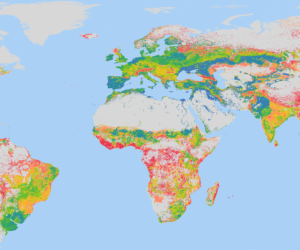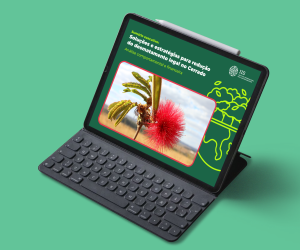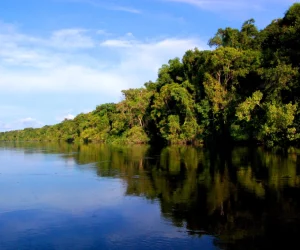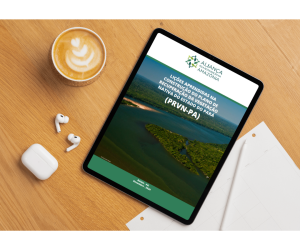Publications > Blog
What are Nature-Based Solutions (NbS) and what are their benefits?
Nature-Based Solutions (NbS): What Are They?
I have never planted a tree. This is probably one of the main goals of any first-year biology student, and I, as a first-year student in the past, also shared this desire. However, even with more than 10 years of academic life, I have never done it. In fact, I have never planted — but I have hugged.
I have hugged hundreds of trees (literally!). During my master’s degree, I monitored the growth of a reforestation by measuring the width of the trees, hugging them with a measuring tape. I used to say that my job was to be a “tree hugger.”
But everything changed two years ago when I started working at the International Institute for Sustainability (IIS). Although I have never got my hands dirty planting a tree, I can say that my work indirectly contributes to planting thousands of them. This is because the projects we develop at IIS are always focused on Nature-Based Solutions, such as guiding conservation and restoration processes of degraded areas.
We hear more and more about the great potential of NbS, but not everyone understands this concept. As this was my main study topic in graduate school, I always found it almost self-explanatory: “Well, they are Nature-Based Solutions, the name says it all!”
Despite having worked on the topic for years, I had never stopped to reflect on how this set of words could have different interpretations for different people. It was only during my PhD defence that I realised this complexity. After more than three hours defending my thesis, the last evaluator asked the most unexpected question: “For you, what is nature? What does it mean to be nature-based? What is a solution? Solution for whom?”
Although it seems self-explanatory, the fact that they are broad terms ends up generating more doubts about the concept. In short, NbS are actions that protect or restore nature to solve social problems, generating benefits for both. The process of restoring degraded areas by recovering the forest and biodiversity is a great example of a nature-based solution.
There are three main aspects to fully understanding the concept:
- Why Nature-Based?
Nature offers numerous essential ecosystem services, such as air and water purification, climate regulation, and crop pollination, among others. By basing our solutions on nature, we harness these services to address urgent problems.
- Solutions For What?
NbS are implemented to tackle issues relevant to society, such as deforestation, climate change, pollution, and water scarcity.
- Solutions For Whom?
These strategies benefit both the environment and people. They are designed to be efficient, economically viable, and capable of generating multiple benefits, such as biodiversity conservation, improved quality of life, and community resilience.
Benefits of NbS
Now that you understand the concept, it is easier to understand why so many people are talking about its potential, right? NbS offer a series of benefits beyond their primary objective. For example, a reforestation project can not only capture carbon but also improve air quality, conserve biodiversity, provide water resources, and reduce vulnerability to natural disasters.
Maybe an analogy will make it easier to understand. For example, everyone knows that going to the gym is a good strategy for losing weight, right? But in addition to losing weight, going to the gym generates a series of other benefits, including a healthier life, better routine, and even better sleep.
NbS and Climate Mitigation and Adaptation
Nature-based solutions play a crucial role in mitigating climate change and adapting to its impacts, as they help sequester carbon, reduce urban temperatures, prevent floods, and increase community resilience.
The widespread adoption of these solutions can significantly reduce the social and economic losses associated with frequent disasters, such as the floods occurring in Petrópolis (RJ) and recently in Rio Grande do Sul. Floods and landslides can be mitigated through the restoration of forests and the creation of natural buffer zones, for example. Although NbS may not completely prevent natural disasters, they help to minimise the damage.
So, if the benefits are so clear, why don’t we have nature-based solutions being implemented everywhere? Often, this occurs due to conflicts of political, social, and economic interests that hinder change. It’s like people only remember to go to the gym after overindulging at the company barbecue (i.e., when a disaster occurs), or when summer is coming (i.e., seeking immediate benefits).
However, just like in the gym, it takes time to reap the benefits. In these cases, the nature-based solution is understood as a natural ‘insurance’ for society and should be implemented preventively — that is, before disasters! For this to happen, it is crucial to address these challenges with policies and practices that promote the large-scale implementation of these sustainable solutions.
Examples of Nature-Based Solutions
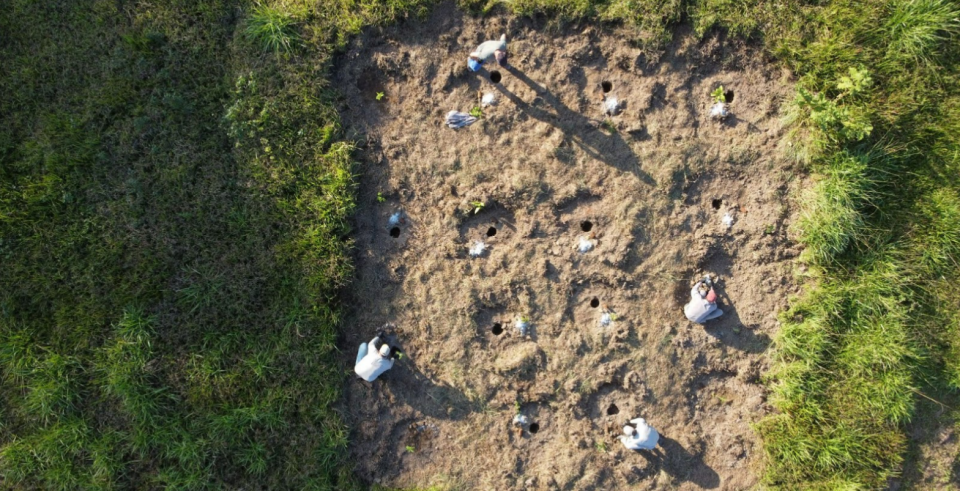
In Brazil, there are several public, private, and civil society initiatives that work with restoration as a nature-based solution. For example:
- Atlantic Forest Restoration Pact – A national civil society movement articulating public and private institutions, governments, companies, the scientific community, and landowners for effective ecological restoration;
- re.green – A startup partnered with IIS, developing large-scale ecological restoration in the Amazon and Atlantic Forest, with the goal of recovering 1 million hectares aiming at climate change mitigation, biodiversity conservation, and strengthening local communities.
At the International Institute for Sustainability (IIS), we are committed to the development and implementation of NbS. We often work with prioritisation efforts to identify areas with the greatest potential to generate the highest volume of benefits at the lowest costs, aiming to accelerate their implementation. Our projects also include:
- Reforestation of Degraded Areas: We focus on the recovery of degraded areas to restore biodiversity and sequester carbon.
- Support in Maximising Restoration Benefits: We support restoration initiatives using spatial intelligence to identify ways to maximise benefits and reduce risks and costs.
- Support in the Development of Public Policies for NbS: We develop vegetation recovery plans for national and sub-national governments.
- Green Infrastructure in Cities: We implement urban solutions that increase the resilience of cities and improve the quality of life for residents.
- Strengthening of Production Chains: We support the development of projects focused on agroforestry as a subsidy for local communities.
Ways to Partner with IIS
We are open to partnerships with governments, companies, and NGOs to expand the impact of these strategies. Our collaborations can include:
- Project Development: Working together to identify and implement NbS tailored to local and regional needs.
- Research and Development: Developing studies, approaches, and innovations that enhance NbS practices.
- Capacity Building and Education: Promoting events and workshops to disseminate knowledge about NbS.
- Quantification of Benefits and Costs: Assessing the cost-benefit of implementing NbS aiming to maximise benefits and profits while reducing risks and costs.
Nature-Based Solutions offer a promising and necessary path for a sustainable future. The goal of planting a tree is still on my list, but I am content with the certainty that I hug trees every day through my work at IIS — even if only figuratively. Hugging a tree is a symbolic act of recognising nature’s contributions to a better world.
We at IIS are all tree huggers in the deepest sense, always working to develop solutions that transform the world in favour of coupling nature and society. And you, have you hugged a tree today?
I hope this text has contributed to your understanding of what Nature-based Solutions (NbS) are and inspired you to support sustainable solutions. Follow us on social media to keep up with our upcoming articles:
References
Related Content
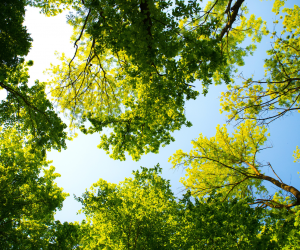
Framework to guide the mitigation of natural disasters through Nature-based Solutions

The Atlantic Forest Trail: Restoring Productive Landscapes in the Guanabara Reconcave
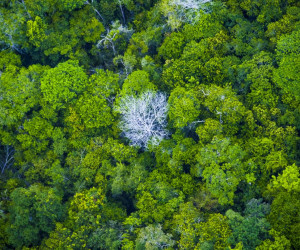
State Plan for the Recovery of Native Vegetation in the State of Pará (PRVN)

IIS-re.green partnership to restore at least 1 million hectares of forests

NATWIP: Nature based solutions for water management in the periurban: linking ecological, social and economic dimensions
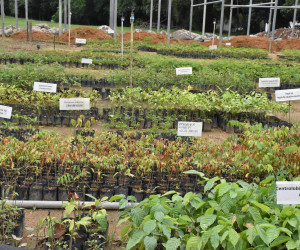
On the Atlantic Forest trail: restoring landscapes and strengthening local production chains in the Central Fluminense Mosaic
